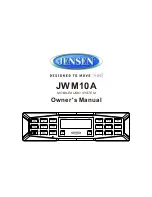
Equalizer Installation and Administration Guide
329
sticky network aggregation
Basically, this is server affinity determined by a network mask at Layer 4. If
the following conditions are all true:
•
an incoming request to a Layer 4 cluster has a source IP that
matches the sticky network mask set for the cluster
•
the destination port on the server is not responding
•
the same server IP with another port is defined in another cluster
Then Equalizer will attempt to forward the request to the same server on the
other port.
sticky timer
A countdown timer used to manage sticky connections to a Layer 4 cluster.
When this timer expires (i.e., there is no activity between the server and client
for the duration of the timer setting), Equalizer removes the sticky record for
the connection.
subdomain
A section, which is formally named, that is under a domain name; analogous
to the relationship between a subfolder and folder. For example, in
www.coyotepoint.com
,
www
is the subdomain.
See
domain, domain name,
and IP address.
See also
DNS.
subnet
Part of a network that has the same address as the network plus a unique
subnet mask.
switch
A Layer 2 device that connects network segments into one broadcast domain.
SYN/ACK
Synchronize and acknowledge; a message that synchronizes a sequence of
data information and acknowledges the reception of that information.
syslog
A system log file, in which information, warning, and error messages are
stored in a file, sent to a system, or printed.
TCP
Transmission Control Protocol; the rules for the conversion of data messages
into packets. TCP provides
See
ISO/OSI model, Layer 4, packet, transport
layer.
TCP/IP
Transmission Control Protocol/Internet Protocol; the rules for transmitting data
over networks and the Internet.
Telnet
Part of TCP/IP, a protocol that enables a user to log onto a remote computer
connected to the Internet.
See
TCP/IP.
traceroute
A utility that shows the route over which a packet travels to reach its
destination.
transaction
A transaction is a Layer 7 interaction between a client and a server over a
network protocol that defines the format of the interaction. An HTTP
transaction, for example, is a single client request and associated server
response. HTTP is thus a
transaction-oriented protocol
. This is in contrast to
Layer 4 TCP, which is a
connection-oriented protocol
and does not provide
the notion of a transaction to applications running over it.
Transmission Control
Protocol (TCP)
See
TCP.
Transmission Control
Protocol/Internet Protocol
(TCP/IP)
See
TCP/IP.
transport layer
See
Layer 4.
See also
ISO/OSI model.
TTL
Time-to-live, the length of time, in seconds, that a client’s DNS server should
cache a resolved IP address.
Summary of Contents for E350GX
Page 18: ...Chapter Preface 18 Equalizer Installation and Administration Guide ...
Page 38: ...Chapter 1 Equalizer Overview 38 Equalizer Installation and Administration Guide ...
Page 80: ...Chapter 4 Equalizer Network Configuration 80 Equalizer Installation and Administration Guide ...
Page 110: ...Chapter 5 Configuring Equalizer Operation 110 Equalizer Installation and Administration Guide ...
Page 208: ...Chapter 7 Monitoring Equalizer Operation 208 Equalizer Installation and Administration Guide ...
Page 240: ...Chapter 8 Using Match Rules 238 Equalizer Installation and Administration Guide ...
Page 262: ...Appendix A Server Agent Probes 258 Equalizer Installation and Administration Guide ...
Page 274: ...Appendix B Timeout Configuration 270 Equalizer Installation and Administration Guide ...
Page 280: ...Appendix D Regular Expression Format 276 Equalizer Installation and Administration Guide ...
Page 310: ...Appendix F Equalizer VLB 306 Equalizer Installation and Administration Guide ...
Page 318: ...Appendix G Troubleshooting 314 Equalizer Installation and Administration Guide ...












































